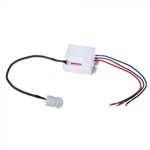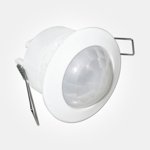Light Sensors
Light sensors provide additional security during darker hours as well as offering savings by providing greater control over when and how a light activates.
Photocell Sensors Motion Sensors Ceiling Sensors Sensor Switches Outdoor SensorsWhat are the different types of light sensors?
There are several types of light sensors available for the lighting market, each with their own uses. There are options for detecting motion, usually including controls selecting the brightness levels to activate from, this is known as a PIR sensor. There are also Photocell sensors, which activate during dark hours and are generally used as a form of security light. And finally there are microwave based light sensors, these function similarly to PIR sensors, however they use microwaves to detect motion, so they can be used to detect motion through thin glass and over longer distances.
What are light sensors used for?
Sensors can have a variety of applications ranging from activating lights during dark hours, detecting motion and activating lights and electrical circuits, as well as use for robot intelligence. Light sensors can usually be customized to alter the lux level that they activate at, as well as the length of time activated for.
Can I add a motion sensor to a light?
If you have a pre installed, on/off light, you may wish to add a motion sensor to it for security purposes or just general use. External light sensors are available and can be mounted away from the light, pointing in the required direction. These externally mounted sensors often have a variety of detection angles available, as well as a variety of colours and activation settings.
Do sensor lights use a lot of electricity?
Sensors do require a very small amount of electricity in order to function, while in standby mode and during active use. The amount used is miniscule, roughly 1 watt while in standby and around 5 to 6 watts while in active use. This energy usage required to run a sensor is often overshadowed by the savings that come from the more fine tuned control over your lighting, as they will then come on only when required rather than all night (when used with PIR and Microwave sensors).











































